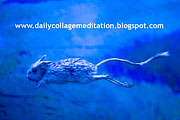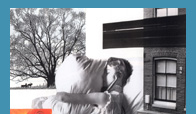Новая серия коллажей Ах как хочется цвета!
9.01.2011
Новая серия коллажей И все они - Любовь
28.12.2010
Новая серия коллажей Звонкие звезды

 |  |  |

Новости
20.02.2011 Новая серия коллажей Ах как хочется цвета! 9.01.2011 Новая серия коллажей И все они - Любовь 28.12.2010 Новая серия коллажей Звонкие звезды 
|
В Центральном музее связи имени А.С.Попова подготовлен курс лекций на тему: «Всемирный почтовый дизайн», рассказывающий об основных художественных стилях, таких как неоклассицизм, эклектика, модерн, Ар деко, функционализм-конструктивизм и других, повлиявших на оформление почтовых документов. Курс рассчитан на широкий круг посетителей. Лекции читает искусствовед, переводчик, член Международной ассоциации искусствоведов - Дьяченко Андрей Петрович.
далее Персоны Весь список Искусство Весь список Открытки О сайте НЕВЕЗУЧИЙ РЭДИМЭЙД (the unhappy readymade, термин Марселя Дюшана) рэди-мэйд-структура, в которой обыгрываются деформация или выцветание бумаги и картона вследствие катастроф или воздействия стихии. Термин предложен М. Дюшаном
|
James Rosenquist
Rosenquist was born in 1933 at Grand Forks, North Dakota. His family moved to Minneapolis in 1944 and soon after he began his studies of art at the Minneapolis Art Institute (1948). In 1953 he continued his studies of painting at the University of Minnesota. In 1955 he had a scholarship to go to the Art Students' League, New York, where he met Robert Indiana. During this period he painted small format abstract paintings and worked part-time as a driver. In 1957 he met Jasper Johns and Robert Rauschenberg. In 1959 he was at the same drawing class as Claes Oldenburg and was made "head painter" by the Artcraft Strauss Corporation where he painted billboards. He married the textile designer Mary Lou Adams. During the election he produced the picture President Elect in which John F. Kennedy's face is combined in a kind of collage with sex and automobile imagery.
In 1968 he was given his first retrospective by the National Gallery of Canada, Ottawa. In 1969 he turned his attention to experimenting with film techniques. In 1970 he went to Cologne for the opening of his exhibition at the Galerie Rolf Ricke. During the public protest against the Vietnam War he was briefly detained in Washington. During the same year he had comprehensive retrospectives at the Wallraf-Richards Museum, Cologne, and the Whitney Museum, New York. In 1974 and 1975 he lobbied the senate on the legal rights of artists. He became separated from his wife and designed his own house with an open-air studio at Indian Bay, Aripeka, Florida. In 1978 F-111 was exhibited in the International Pavilion at the Venice Biennale. In his work of the late seventies and eighties, e.g. 4 New Clear Women, images of women are confronted with machine aesthetics, usually in large oblong compositions. The themes of these dynamic compositions also include fire, progress and war machinery which he shows in rotating pictorial narratives. Between 1985 and 1987 Rosenquist's development as an artist was shown in a comprehensive retrospective at six American museums. (Based on the biography at WWW.PopArt)
Exhibitions Источник: spaightwoodgalleries.com Последние публикации в разделeЧитайте также...Взрыв! Статья о Ричарде Гамильтоне из Советского Союза образца 1972 года. Статья опубликована в журнале Англия, найденном на развале. Ричард Гамильтон - мой любимый художник, представитель поп-арта. Его работа "Именно это делает дом таким родным и привлекательным" (1956) вдохновила меня на коллажирование. Статья в журнале за 1972 год (год моего рождения) воспринимается мною как подарок... Удивительно! далее B Эстонском Художественном музее Kumu в Таллинне до 11 апреля 2010 года проходит выставка «POP-арт Forever!», рассказывающая о раннем периоде эстонского поп-арта. На выставке представлены произведения и информативные материалы, начиная с 1966 года, как из музейных, так и частных собраний. далее Статья об одном из крупнейших мастеров немецкого искусства XX века. На протяжении всего творческого пути Польке увлекается экспериментами с различными техниками и технологиями, виртуозно объединяя технику классического офорта с ультрасовременными технологиями. Зигмар Польке присущ особый художественный метод и изобразительный язык. Он рисует, пишет, вырезает, делает коллажи, работает со всем — от стекла до бумаги. Польке называют «алхимиком», имея в виду его стремление оживить свои картины, которые превращаются в саморазвивающиеся организмы.
далее | ||||||||||